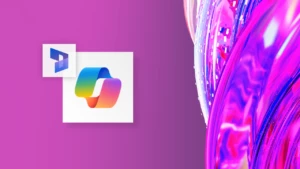
Watch how to improve on-the-job guidance with mixed reality
Traditional guidance or upskilling usually requires a trained trainer, a trainee, some mix of resources like work instructions, parts manuals, or checklists, and a real-world or simulated task to perform. In this scenario, a skilled worker (the trained trainer) guides the trainee through the job until they have mastered the process and can work alone. This process is called on-the-job guidance, and while it has been effective in supporting workforce development for decades, it has always been challenging from a resource and scale perspective.
Over the past decade, however, organizations across industries have engaged in digital transformation, leveraging advances in technology to reimagine business processes to make them more effective and efficient. This is what Microsoft Dynamics 365 Guides is all about, including its application in training and development to empower employees with step-by-step holographic instructions right where the work happens. This article highlights three ways to use Dynamics 365 Guides to improve the employee experience.
1. Empower self-guided learning
One of the key benefits of utilizing mixed reality applications is that it frees the trainer from the trainee. For example, a trainer can develop a digital process guide that any number of trainees can then utilize without requiring the trainer to be physically present. This empowers workers to embark on self-guided learning by equipping them with task instructions, essential data, and model visualizations directly in the flow of work. The result is increased efficiency from a resource perspective and improved productivity, quality, and safety from the worker’s perspective.
The idea of self-guided learning is nothing new; in mixed reality, though, self-guided learning is dramatically improved by delivering information where and when it is needed in the training process. For example, in the following video, we see how Dynamics 365 Guides allows for self-guided learning that keeps workers in the flow of work by moving with them, directing attention to the next step, and providing the information needed every step of the way.
Learn more in our overview of Dynamics 365 Guides.
Similar scenarios unfold thousands of times per day in manufacturing plants around the world. From the machinist securing a part in a multi-axis lathe who needs to check a read-out on a gauge to the repair technician working on a new piece of equipment, when workers can always access a virtual library of parts manuals and assembly instructions wherever they are, they can stay in the flow of work longer. This is one reason that Forrester found that mixed reality improved field task efficiency by 40 percent and reduced rework by 7 percent, saving $13,680 annually per field task worker.1
2. Embrace mixed reality
As shown in the video below, Dynamics 365 Guides works by overlaying 3D visualizations and holograms alongside connected work instructions and reference materials in a real-world environment, all without sacrificing autonomy or range of movement. Plus, Dynamics 365 Guides also allows anyone to create new guides with low-code/no-code authoring so that your organization can respond quickly and efficiently to new training needs. In this short video clip, you can see how authoring steps taken on a PC, automatically align to a hologram placed in the work environment.
3. Enable hands-free triggers
In addition to providing frontline workers with immersive instructions, Dynamics 365 Guides also allows action-activated triggers to mimic real-world actions. For example, HoloLens 2 can track worker hand movements and automate guidance based on where a worker’s hands are located in the process. This is demonstrated in the video below. When the worker completes a task, such as tightening a bolt or screw, the worker is automatically shown a holographic prompt directing them to the next step in the process. This helps build muscle memory and improves the learning process.
Not only do hands-free triggers keep workers in the flow of work longer, but they are also more accurate than asking a coworker what to do next, which may or may not yield the correct answer, and more efficient than referring to traditional work instructions, which breaks the concentration on the task at hand. Moreover, enabling hands-free triggers, either with hand tracking or voice activation, improves process safety, particularly in industries like manufacturing, where significant amounts of rotating machinery are found.
What’s next?
This article shows that embracing mixed reality, empowering self-guided learning, and enabling hands-free triggers are three ways to transform on-the-job guidance. We’ve also published videos that explore how intuitive placing and working with holograms can be, features for hands-free work, and a look at the level of detail you can accomplish with Dynamics 365 Guides. If you are ready to start empowering your frontline workers today, we invite you to get started with a free 60-day trial of Dynamics 365 Guides. Or to learn more, check out our learning path, Work with Dynamics 365 Guides.
1 Forrester, 2021. The Total Economic Impact™ Of Mixed Reality Using Microsoft HoloLens 2.



